The problem is the way you power the op-amp. Your bias scheme does ensure that there is 36 V between the V+ and V- rails of the amplifier, but it doesn't ensure that V- is at -18 V and V+ is at +18 V.
For example, look what happens if you set your input voltage (uC) to 0.56 V. Now the op-amp will, if it's operating in its linear range, take 3.4 mA from the positive supply and drive it out of its output pin, which flows through R4 and R3, producing 0.65 V on the IN- pin, completing the feedback loop.
But after flowing through R3, where does that 3.4 mA go? It needs to return to the negative terminal of the power supply. So it flows through the ground connection to R1, and through R1 to the supply's negative terminal.
But 3.4 mA times 10 kohms is 34 V, so this means that the negative terminal of the supply is at -34 V. Therefore the positive terminal of the battery is at +2 V. But the LM741 can't drive its output pin higher than 2 V below its positive power terminal (for load of 2 kohms, according to the TI datasheet. For the 250 ohm load in your circuit, the limit will be even lower). So this is going to drive the op-amp into saturation. You're not going to get a higher output voltage from the op-amp, or more current through the load (R4).
What can you do to fix this?
Your options include
Use a less stiff divider to set your ground reference relative to the supply terminals. But this will start to waste substantial power if you make it compliant enough to deal with 20 mA return currents.
Use proper independent +/- 18 V supplies, each with its own ground reference.
Use another op-amp or linear regulator circuit to hold the virtual ground node at 18 V below the positive supply terminal.
Use a shunt device to set the virtual ground voltage. For example a 15 V zener diode in place of R1 could easily be chosen to allow an additional 20 mA to flow without the power supply node voltages changing by more than a few 10's of mV relative to the ground node. Note that with 20 mA output current, the op-amp will be consuming around 320 mW and the zener will be consuming about 330 mW, so you will need to choose your packages accordingly.
